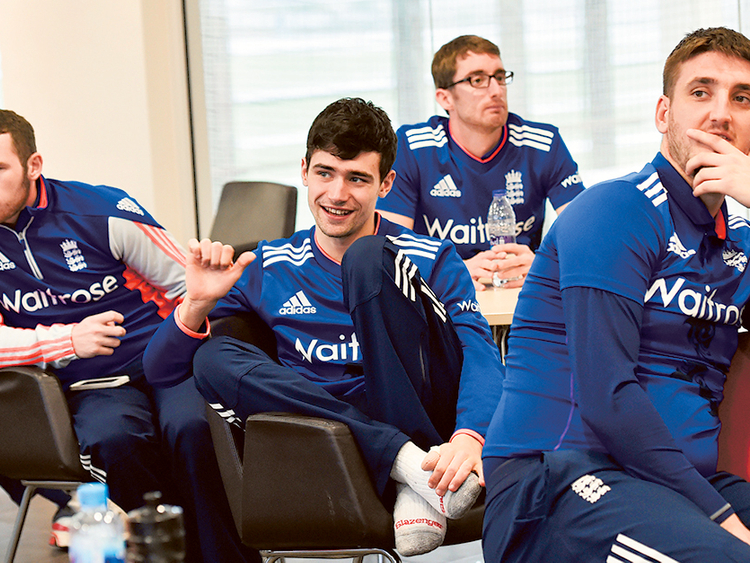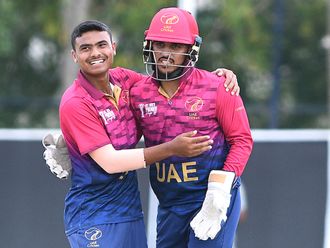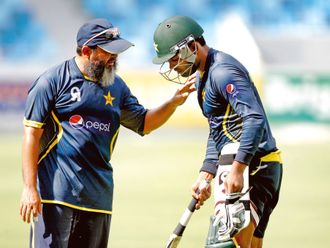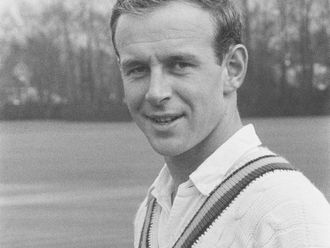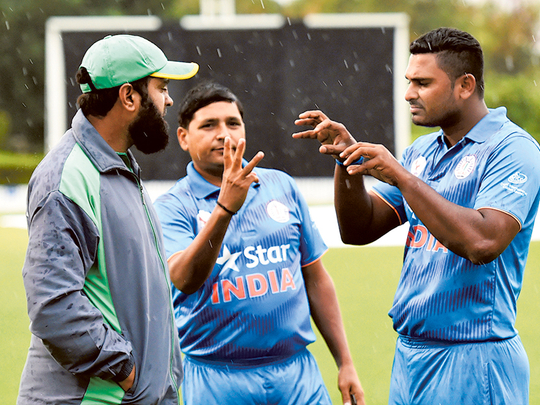
Dubai: The captain is an integral part of any team but no more so than in deaf cricket where the absence of sound makes visual directives imperative.
This became instantly apparent at the ongoing Deaf International Cricket Council Championship at the ICC Academy in Dubai Sports City this week, where, right from the national anthems, all eyes were on the captain.
The slightest lapse in concentration could result in you being either left stood to attention while your teammates have already begun taking up their positions in the field, or accidentally sparking a diplomatic incident by turning your back and walking away while another nation’s anthem is still playing.
And the considerations that abled-hearing cricketers might take for granted don’t stop there.
“They have to be extra aware of their peripheral vision,” said England manager Jeff Evans. “If two fielders go in for a catch while both are looking skywards they have to know where their teammate is. Occasionally we get a clash outfield but we try to avoid that.
“On appeals for a catch behind the wicket they also have to rely on the umpire a lot more because they won’t hear if the batsman has edged the ball, they really have to look hard to see if there’s any deviation,” he added.
Umpire Suneej Thottathil admitted that there were a lot more appeals than normal but that he had come to accept it because of the circumstances.
Another issue where visual communication is key is with the batsmen, and knowing when to run and when to stop.
South Africa’s assistant manager Calvin Kammeraat said: “We see a lot more run outs than mainstream cricket, unless it’s a strong partnership that’s been together a few years and both players understand each other’s body language.”
Essentially though it’s just the same as regular cricket, even down to the sledging.
“We get a little bit of that too,” adds Kammeraat. “The odd mean look, hand signal or gestures of exasperation, but they are usually directed at the umpire.
“Otherwise it’s a lot more gentlemanly than mainstream cricket and there’s a lot more respect between players because of their shared experiences. Nine times out of 10 if a batsman edges the ball and is caught he will walk of his own volition.”
All in all there’s a lot more unity with deaf cricket, according to South Africa captain Colin Venter.
“Eyes are on the captain all the time and that makes us feel part of something, we are very gelled together,” he said. “Obviously we are all conditioned to this environment and we are very close.”
Evans said that this almost telepathic understanding between players added to the allure of the sport.
“It’s fantastic that they play with the difficulties they have, it’s not an easy sport even when you are fully abled. It’s a credit to the boys that they have done as well as they have, and the standard is as good as it is.”
So, if the standard is that high, could a deaf player make the leap into a mainstream national team?
“It will be difficult,” said South Africa coach Sello Sebola. “Mainstream players won’t know sign language, so deaf players feel a lot more comfortable here, everyone understands each other.
“If you throw someone into the deep end where no one understands you it’s not easy for coaches and captains to communicate. But just to have that exposure would show that deaf cricket is alive. It would be important to have an ambassador for the game.”
Venter added: “I don’t think there is enough opportunity for deaf players. Obviously because of the communication barrier, mainstream teams may feel we are a burden, so they leave us aside.”
But India coach Himmat Singh said it didn’t have to be this way. “There are definitely players who are good enough to make it into mainstream national teams. Abled hearing or deaf it doesn’t matter, the game language is the same, their performance can be their voice.
“The problems are easily solved by the use of an interpreter, the only thing that should really matter is how good you are.”
*Some interviews were conducted via a sign language interpreter.


